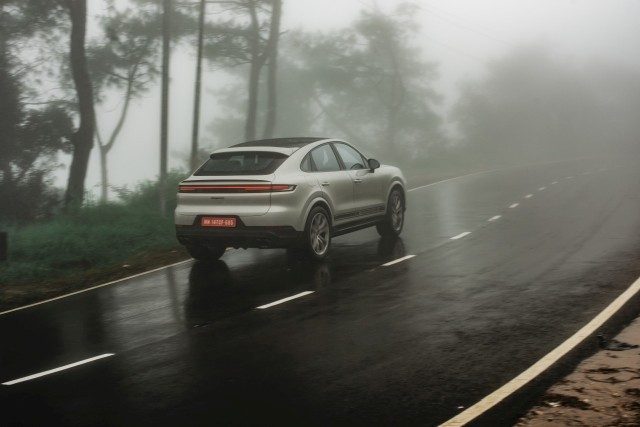
Driving in the rainy season is more difficult than driving in the dry, and there are things you can do as a driver to maximise safety.
As the monsoon season is now upon us in all its elemental fury, the roads have become a lot more dangerous than they otherwise are, which is saying something, considering we live in India. Here are some of our top tips to have a safe driving experience in the monsoon. We also look forward to hearing from experienced drivers about how they tackle the unpredictability of this season. Do hit us up on social media.
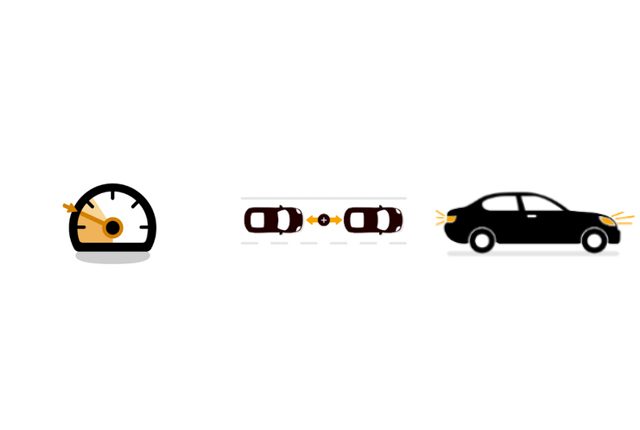
Dos-
- Reduce speed:
Seems rather obvious, yes. Even in cars that have ABS and EBD, stopping distance increases as there is less traction available to the tyres. The same applies while taking turns. Overall, lower speed gives the driver extra time to react.
- Keep a larger margin of error:
Other drivers on the road may not adhere to our first rule, or any rule for that matter. Hence, you need to keep a larger margin of error to avoid suffering from mistakes made by other road users. It is best to keep as much distance as possible from other vehicles in traffic.
- Brake early, shift early:
Traction is at a premium, so braking early is better. Gives the driver more time to react and increases the number of options available. Similarly, planning for gear shifts in manual cars will further reduce fatigue during long drives. Using higher gears when possible will make the acceleration more progressive and linear. For beginners who drive an automatic car, using Eco mode is a smart move. Smooth inputs on steering and braking helps in the rain as well.
- Use your lights correctly
One should use fog lights only in foggy conditions. It is a good idea to keep the headlights on in low-light conditions and when driving on the highway. Ensure all lights are working well, including the brake lights.
- Keep an emergency kit in the car:
Breakdowns increase in the monsoons and help takes longer to arrive. So keeping an emergency kit in the car can come in really handy in such situations. It should contain a first aid kit, flashlights, blankets, energy bars and drinking water, and an empty bottle for answering nature’s call (let’s hope things do not go that badly).
- Keep absorbent material like newspaper on hand:
Wet shoes can cause a slip on the pedals, so old newspapers can be used to dry the soles of shoes before starting to drive. Not to mention, old newspapers are good at soaking up water, so they can serve as disposable paper towels in various other situations. If one can have a bunch of microfibre towels that can be a great idea as well.
- How to drive through standing water:
If water gets into an engine, the best thing to do is leave it alone. Trying to start it will only worsen the damage. Do not start the car if the exhaust pipe is under water. Also, it is better to use a lower gear at higher rpm so as not to have to shift gears while in the water, as the car loses momentum as well as positive pressure in the exhaust manifold (manual mode for an automatic car), which can bog the car down or allow water to get in the engine.
- How to drive through tunnels:
Tunnels have unpredictable traction, as cars drag in water which mixes with the dirt inside to create a surface with vastly different degree of traction, not to mention terrible visibility due to changing lighting conditions. One should turn on the headlights before entering tunnels unless it is automatic, and be extra cautious while traversing through them.
- How to drive downhill:
Low traction coupled with gravity is a recipe for disaster, so the driver needs to stick to as low a gear as possible when going downhill. Also, in automatic cars, usage of manual mode is a must to ensure the car is unable to reach excessive speeds.
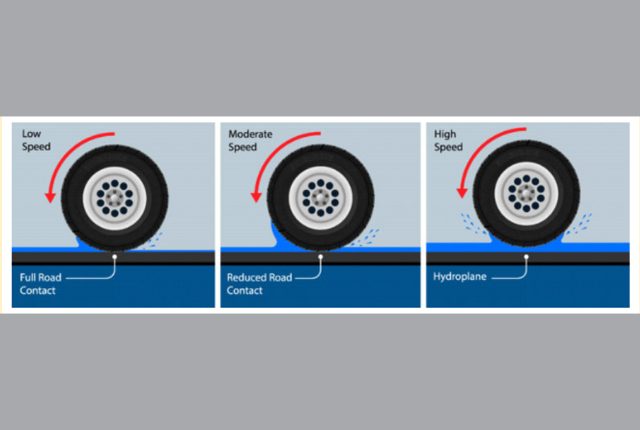
NOTE: Dangers of aquaplaning:
Even if there’s enough tread depth left on the tyres, depending on the speed and the depth of water, a car can aquaplane, where the tyres get separated from the road surface by thin film of water. This causes the steering and braking to stop working for precious seconds, and the driver is at the mercy of lady luck. A slower speed, not hitting standing water at an angle and ensuring proper tread depth are the ways to avoid this from happening.
If it does happen, the first step to recovery is to cease all input, while being ready to catch the car when traction returns as there’s usually a violent yank on the steering. Also, gently squeezing the brake pedal to see if there’s any traction available is a good idea, and any purchase on the road will help with slowing the car down.
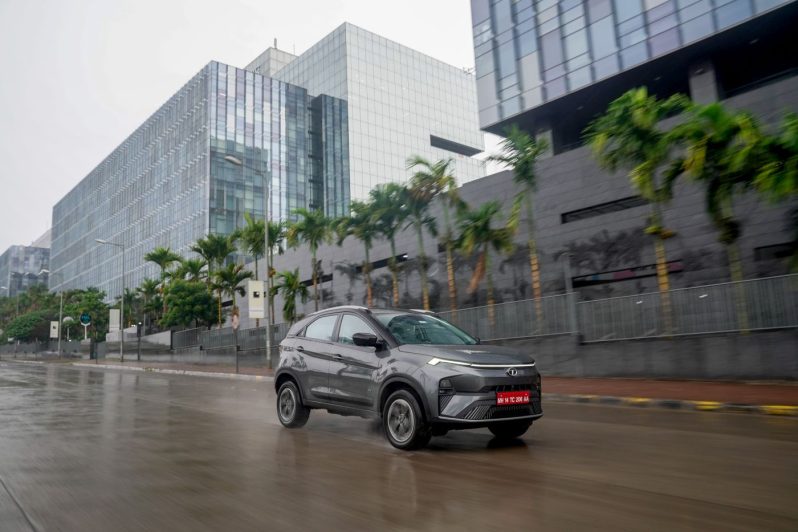
Don’ts-
- Turn on your hazards while driving:
Hazards are to be turned on in case of a breakdown, warning other road users of an obstacle on their path. Hazards are not to be turned on in poor visibility conditions, as turning on the headlamps (and of course the tail lamps along with them) are quite enough.
- Stop in the middle of the road:
One shouldn’t stop in the middle of the road even during peak summer, but the danger increases exponentially in the monsoon due to poor visibility and longer stopping distances. One should always stop as close as possible to the side of the road to lower the probability of getting hit by other cars. If the road has a soft shoulder, it is better to keep the far side wheels on the road while stopping.
- Park in unsafe places:
When parking for longer durations, it is well worth the hassle to find a safe spot, as flooding in the area or falling tree branches can severely damage a car. If there’s no other option but street parking, the car should be parked clear of trees and overhead electrical wires if possible.
- Be indisciplined:
Waiting a few extra seconds after the lights change helps avoid errant drivers who may not be able to avoid a collision. Similarly, trying desperately to clear a traffic signal while its an amber is not a great idea in the rains, it is much safer to slow down before the signal turns red. Also, quick sojourns down the opposite direction of one-ways and driving on the wrong side of the road to avoid taking U-turns is a terrible idea under best of conditions, but in the monsoon the danger from things like this goes up by a much larger degree, and while we never condon breaking traffic rules in any condition, the risk of doing so in the monsoons is much higher.
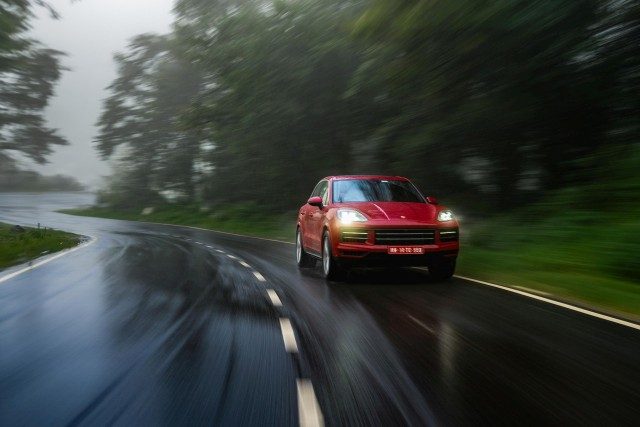
Car prep-
- Tyre health:
Ensure there’s enough tread left on the tyres, as worn out tyres greatly reduces traction and probability of aquaplaning. Also, even if there’s enough tread depth left, older tyres become hard with UV exposure and won’t work properly in wet conditions, so tyre that are older than five years should be replaced.
- Tyre pressure:
Over-inflated tyres have poorer traction, and the effect exacerbates on wet roads. The tyres pressure should be checked once a week.
- Wiper blades:
Wiper blades are the only defence against water accumulating on the windshield and reducing visibility to zero. Should be changed just before the monsoons. Also, treating the windshield with a hydrophobic material helps keeping it clean in the rain.
- Brakes:
Disc rotors catch a lot of rust in the rain, due to commonly being made of cast iron, and this reduces braking performance. They should be cleaned once a month in the monsoons, and the brake pads and fluids should be in optimal condition before the rainy season begins. Ideally, during the monsoon, the brakes should be tested every time the car is taken out of the garage, while within the confines of the parking.
- Full tank:
Due to a higher number of breakdowns and waterlogging, traffic conditions worsen drastically in the monsoons and cars tend to burn more fuel, so keeping the tank topped up every week is a good practice.
- Windshield washer fluid:
Other cars tend to spray quite a bit of mud on the windshields of the cars behind them, and without the windshield washer fluid, there’s no way to clear that short of getting out of the car and wiping the windshield with newspapers or microfibre towels. Keeping a bottle of the windshield washer fluid in the car shouldn’t go amiss.
- AC gas/window defogger:
The AC helps remove condensation from inside the car, as does the rear window defogger, so these should be checked before the monsoon reaches us. One should use the AC vent controls to clear the front windshield and if the car is equipped with one, rear defogger for the rear window.
- Wiring and batteries:
Water and electricity don’t mix, so ensuring there are no loose connections or exposed wiring can prevent fires from short-circuits. Also, even a little water getting into the engine will cause starting issues, so a battery in proper condition can enable the car to start even after a large number of false cranks. Some rat-repellent spray might stop rodents from seeking shelter inside the car in the rain and protect the wiring further.
- Underbody rust-proofing:
There are no immediate benefits for this, but underbody rust-proofing treatments can stop corrosions, particularly in coastal areas. A must for owners of older cars.


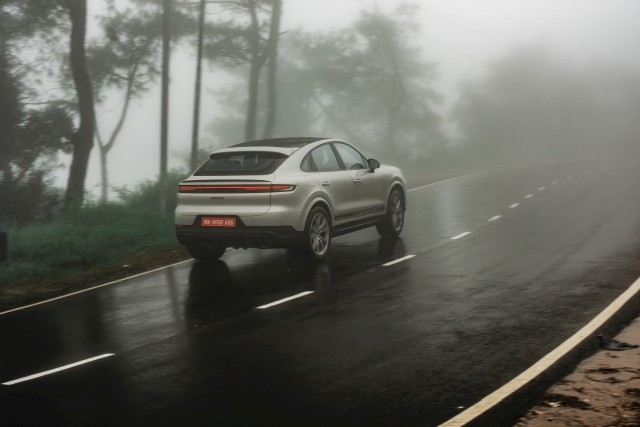


















Leave a Reply